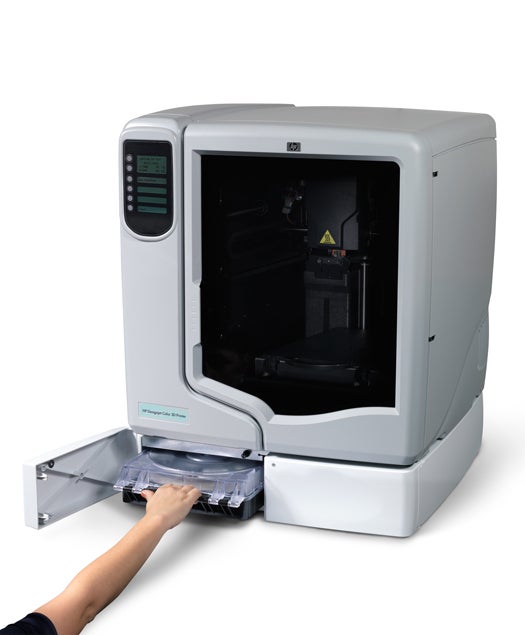HP Designjet 3D Printer Now On Sale, Churns Out Solid Plastic Objects From the Desktop
We may earn revenue from the products available on this page and participate in affiliate programs. Learn more › Remember...

We may earn revenue from the products available on this page and participate in affiliate programs. Learn more ›
Remember back in January when HP announced it would bring a tabletop 3-D printer to market, at a place and time to be named later? That place and time just became a quite a bit less ambiguous. Today Stratasys, the company that is manufacturing the device for HP, announced that it has shipped the first units of the HP-branded Designjet 3D fabrication machines, which will be available in May — but only in Europe.
The Designjet 3D is based on Stratasys’s Fused Deposition Modeling (FDM) technology, which turns three-dimensional CAD drawings into tangible prototypes by extruding partially molten ABS plastic in extremely fine layers one atop the other, forming the entire 3-D model in a single piece from the ground up. Designjet 3D will print in ivory-colored plastic only while Designjet Color 3D will print single-color parts in up to eight different colors (we’re not sure why you can’t just put a different hue of ABS plastic in the Designjet 3D).
Aimed at businesses large and small as well as educational institutions and individual inventors, the idea is to offer a point of entry into 3-D printing for those who want to prototype in-house directly from their computers. That kind of convenience can save a lot of time and money on product development, but it also comes with a sizeable up-front cost.
In our earlier coverage to speculated that the price of HP’s printer would come in under $15,000 — the price of a similar printer recently released by Stratasys. But HP today announced that the Designjet 3D would retail starting at less than €13,000, or just under $17,500. Which means the price of entry into the 3-D club may still sit somewhere between unfeasible and pie-in-the-sky for many garage-shop hobbyists.
But the HP printer, by all appearances, seems to have one thing going for it that many commercially scaled systems do not — ease of use. A Designjet in the corner of the office would allow architects, engineers, product developers and the like to carry an idea through from concept to prototype without leaving their desks, culminating in a plastic 3-D model that they can put in the hands of higher-ups or prospective clients. It beats the alternative method of producing up various detailed drawings that are carefully crafted into a prototype by a skilled (and expensive) machinist, a process that can be a suck on time and budgets, especially if designers don’t get it exactly right the first time.
And, lest ye forget, while $17,000 is a big chunk of cash, Designjet 3D is still among the most affordable rapid prototyping systems out there for its size and capability. There are other options – the open-source, DIY MakerBot kit costs less than $1,000 and prints in the same material – but you have to build it. As far as something off-the-shelf is concerned, you’re not likely to do a whole lot better.
What’s really going to define whether the Designjet is a big step forward for 3-D printing is the quality of the prototypes, which we’ll surely hear much more about in coming weeks as the product hits desktops in the UK, Spain, France, Italy and Germany. For those of you not lucky enough to be in those inaugural markets, worry not; rest assured Designjet will be prototyping globally soon enough.